Find your ideal sales funnel template: Top 10 templates to steal for 2025
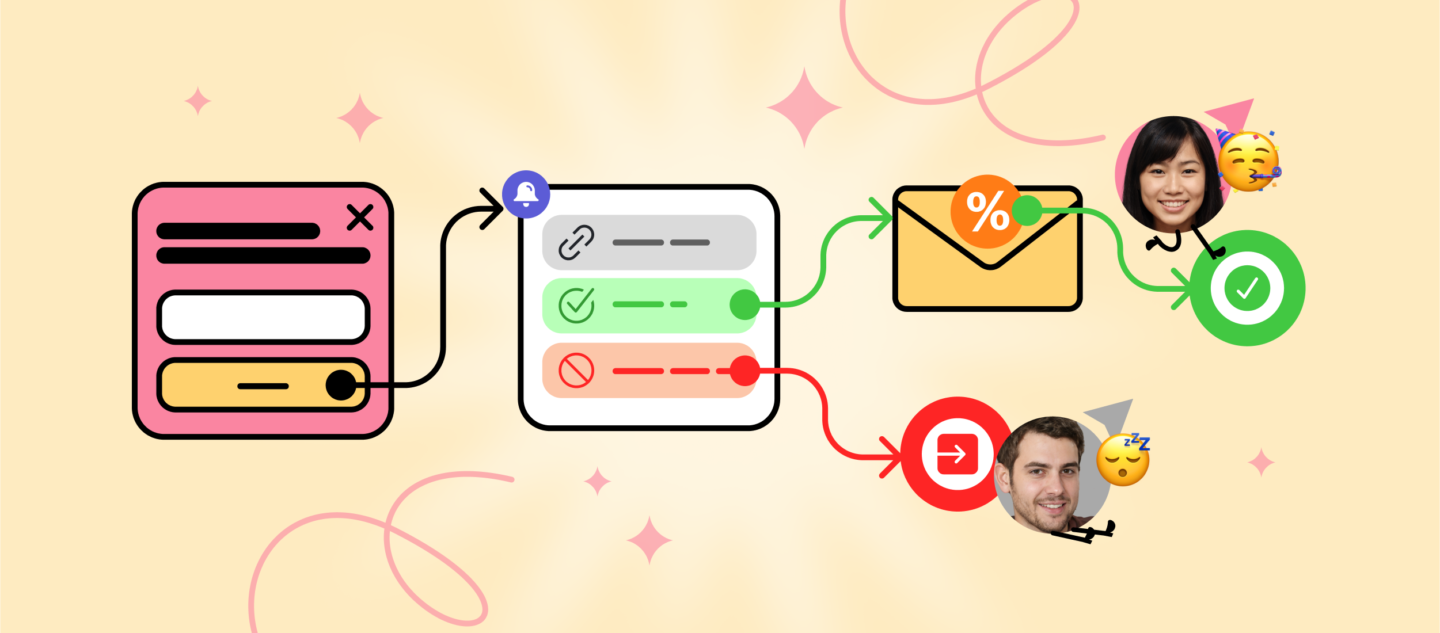
Let’s talk templates that actually work. These aren’t just theories — they’re proven, tested, and fine-tuned for real results. I’ve watched SaaS companies cut their sales cycle simply by using optimized sales funnel templates.
Each one of these templates has been used by growth-focused CEOs and CMOs to drive faster lead conversions and streamline their processes. No guesswork, no wasted time. Just high-impact steps that have been crafted, tested, and refined to bring in more leads and more sales.
Ready to see what’s possible with a plug-and-play funnel built to perform? Dive in to explore the top 10 templates for 2025. These are the ones that deliver.
What is the sales funnel template
A sales funnel template is a structured outline that guides potential customers from awareness to purchase. Picture it as a clear, step-by-step journey. Each stage is designed to help you understand where leads are in their decision-making and what they need next to keep moving forward.
Each stage in the funnel template is strategically designed: it attracts, engages, nurtures, and finally converts leads into sales. This structure lets you skip the trial-and-error process and jump straight into a proven flow that works. Templates often include pre-set steps, like lead capture forms, automated emails, follow-up sequences, and other touchpoints — all crafted to keep leads moving toward a buying decision.
Top 10 sales funnel templates
Here’s the ultimate lineup of templates designed to boost your sales and make lead generation easier. Each of these top 10 sales funnel templates brings its own strategy to the table — whether you’re looking to drive more demos, convert trial users, or launch a new product. Explore which template fits your goals and start capturing more leads, faster.
SaaS Sales Funnel Template
For SaaS businesses, a structured sales funnel is essential to guide potential customers through each phase of the buying process, with a strong focus on customer retention. Selling software services is more complex than selling physical products, requiring a well-thought-out sales funnel template due to the highly competitive landscape and the constant stream of marketing messages that SaaS buyers face.
The SaaS sales funnel template typically includes these stages:
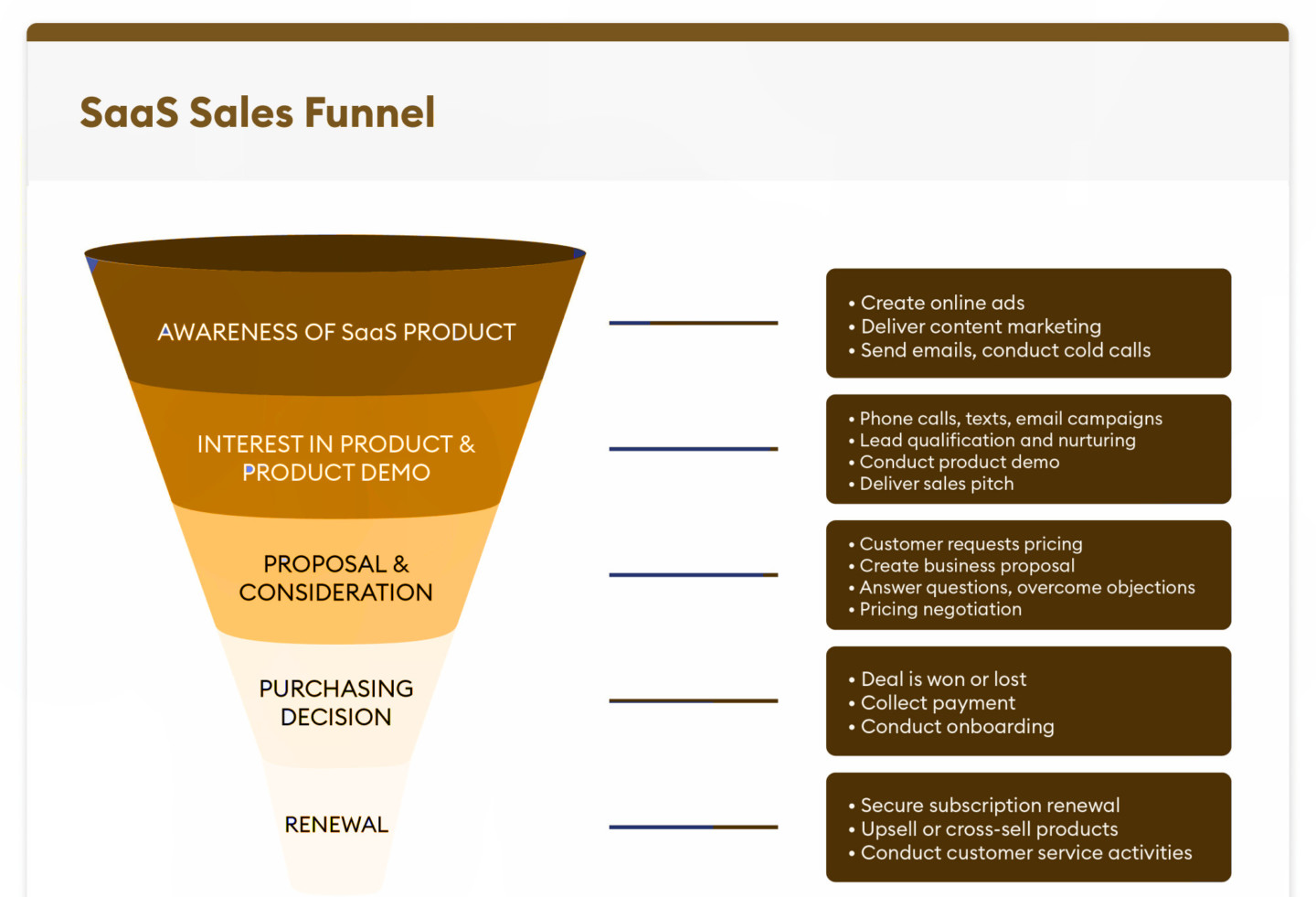
- Awareness of SaaS Product. This stage is all about building brand recognition through marketing efforts, such as online ads, content marketing, email campaigns, and even cold calls. The objective is to raise awareness and attract as many relevant leads as possible to the top of the funnel.
- Interest in Product & Product Demo. After sparking initial interest, the goal is to engage these leads further. This stage involves sales reps reaching out with phone calls, targeted email campaigns, and product demos. These steps aim to nurture and qualify leads while delivering compelling sales pitches that align with the prospect’s needs.
- Proposal & Consideration. Here, potential customers often request pricing information. Sales reps respond by creating tailored business proposals, answering questions, and handling any objections. This stage may involve pricing negotiation, as the goal is to demonstrate the value of the solution and guide the lead toward a decision.
- Purchasing Decision. At this point in the sales funnel, the deal is either won or lost. For those ready to move forward, payment is collected, and the onboarding process begins to ensure a smooth start with the product. This stage focuses on converting leads into paying customers.
- Renewal. In the SaaS world, the funnel doesn’t end with the initial sale. The renewal stage is crucial for securing long-term value, as it focuses on subscription renewals and upsell or cross-sell opportunities. Account managers and customer service teams work together to ensure customers continue to see the value in the product, reducing churn and maximizing customer lifetime value (CLV).
Each stage of this sales funnel template is designed to engage and qualify leads effectively, allowing sales teams to focus on high-potential prospects. This structured approach helps SaaS companies not only acquire quality customers but also retain them for the long term. By following this sales funnel, your marketing and sales efforts are aligned, ensuring you stand out in the crowded SaaS market.
B2B Consulting
The B2B Consulting Sales Funnel template is crafted for businesses that offer specialized services, like IT consulting, law firms, accounting services, or marketing agencies. Since there’s no physical product, the goal here is to build trust, educate clients, and prove value through expertise. For these types of sales, the funnel focuses heavily on personal connection and lead nurturing.
Here’s how it works:
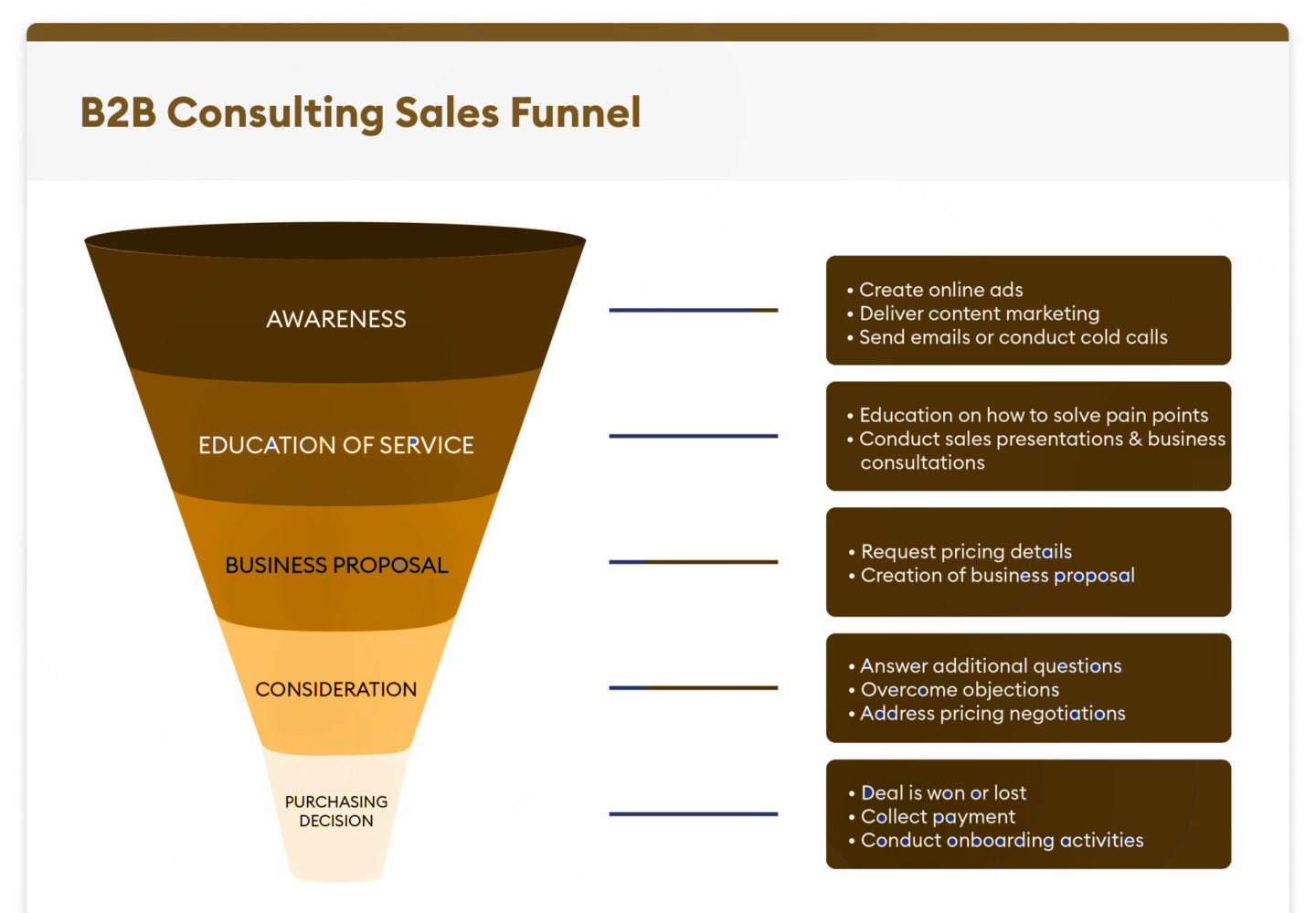
- Awareness
Get your brand on the radar. Marketing and sales teams join forces here, using targeted content, online ads, email campaigns, and, yes, even cold calls. Picture this: a consulting firm runs a LinkedIn ad showcasing how they solve industry-specific challenges. The goal? Simple — drive relevant traffic to your site and spark curiosity about your services. - Education of Service
Now it’s about showing prospects how your service meets their needs. Offer resources that tackle their pain points — think webinars, articles, or one-on-one consultations. For example, an IT consulting firm could share an article on cybersecurity best practices. It’s all about positioning yourself as a trusted source. Sales presentations also play a role, helping prospects see how your service can genuinely impact their business. - Business Proposal
When prospects show interest, it’s time to dive into details. This is where reps share pricing and craft a tailored proposal. Forget one-size-fits-all; this proposal speaks directly to the client’s needs. Imagine a marketing agency outlining a proposal that lays out campaign goals, timelines, and expected results. The client can now clearly see the partnership’s potential. - Consideration
By this stage, clients might have questions or concerns. Reps address these, clarifying details, handling objections, and discussing pricing. The aim? Clear any doubts and build confidence. Say an accounting firm’s proposal is pricier than a competitor’s — reps could emphasize the expertise and personal support they bring to the table, making that higher price worth it. - Purchasing Decision
The client is ready to decide. If they’re on board, the deal closes, payment is collected, and onboarding kicks off. This isn’t just another transaction — it sets the stage for a lasting relationship. Onboarding ensures a smooth start. And if the client chooses not to proceed? No problem. A smart follow-up plan keeps them in the loop for future opportunities.
This B2B Consulting Sales Funnel template focuses on education, trust-building, and personalized engagement. By guiding prospects through each stage with targeted marketing and nurturing, you’re setting up a sales journey that’s aligned with the needs of consulting clients. This approach helps you filter out unqualified leads and zero in on those who see the value in your service.
Social Media
This Social Media template comes from our in-depth analysis of the industry and numerous tests to see what truly drives sales. We’ve looked at what works, what doesn’t, and how to streamline each step for maximum impact. Through this process, we crafted a funnel that’s simple, effective, and laser-focused on engaging leads from the first interaction to the final conversion.
Here’s how it works:
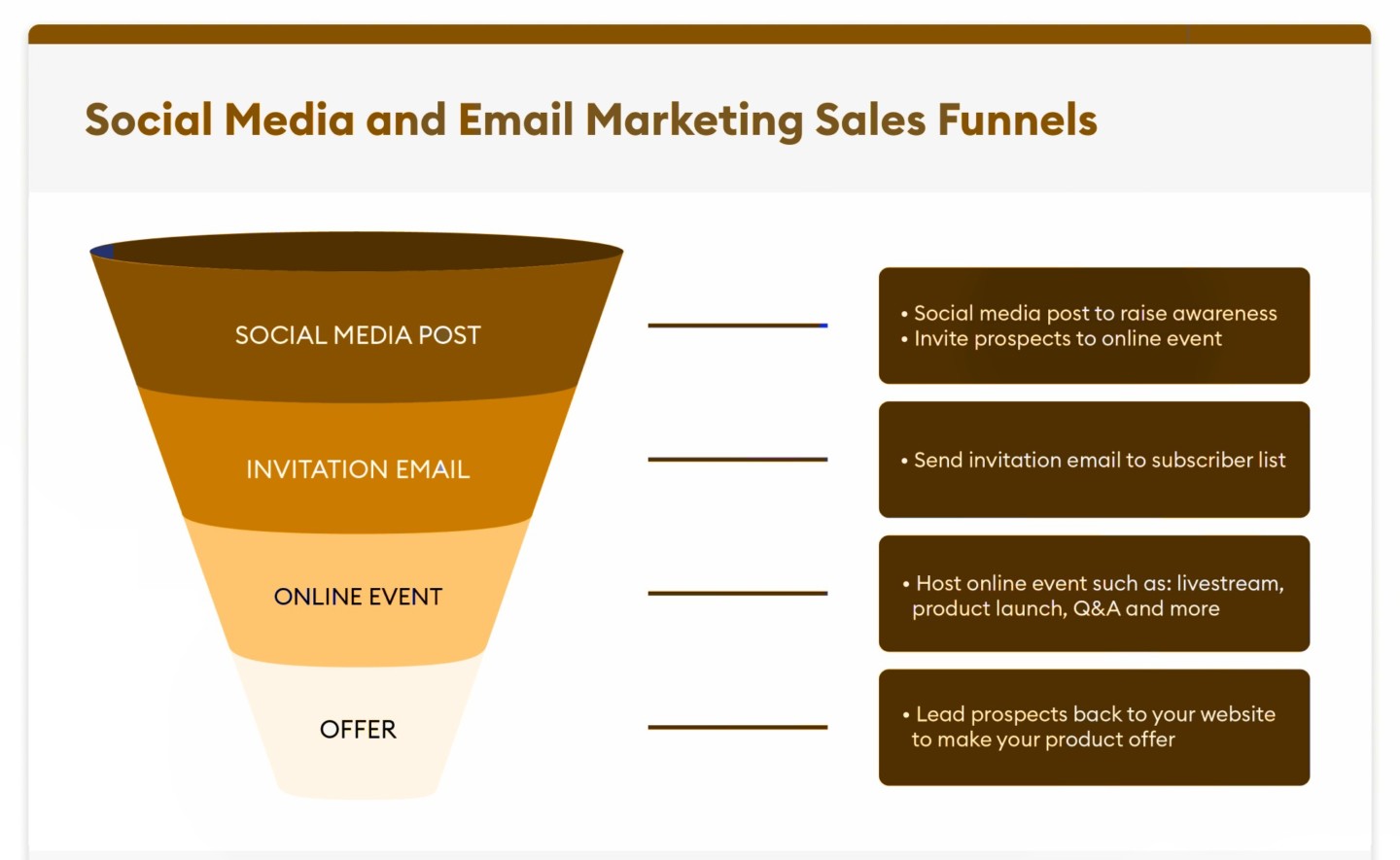
- Social Media Post
It all starts with social. Create an eye-catching post to raise awareness and spark curiosity. This initial post is designed to bring your brand onto people’s radar and invite them to take the next step. Whether it’s a quick video or an engaging graphic, the goal here is simple: get people interested enough to want more. - Invitation Email
Next, you build a deeper connection. Send a personalized invitation email to your subscriber list, formally inviting them to your online event. This email is where you can dive into the details — what’s in it for them, why it’s worth attending, and a bit of excitement about what’s coming. - Online Event
The online event is the heart of this funnel. It could be a live Q&A, a product demo, a workshop, or even a product launch. This event gives your audience a taste of what you offer and a chance to interact with you directly. It’s your opportunity to build trust, answer questions in real-time, and showcase what makes your product or service unique. - Offer
Finally, guide them to the finish line. After the event, lead attendees back to your website or landing page to take action. This is where you make your offer — whether that’s a product, a subscription, or a special deal. The groundwork has been laid, the interest has been built, and now it’s time to convert.
This sales funnel has proven to be a powerful approach for turning social followers into loyal customers. It’s all about building excitement, nurturing interest, and creating a clear, engaging path from awareness to sales.
Real estate funnel
The Real Estate Sales Funnel is all about relationship-building and personalized engagement, similar to a service or agency funnel but with a unique twist. In real estate, properties come and go quickly, which means agents have to juggle tracking both potential buyers and available properties. To make the most of their time, agents need a sales pipeline that qualifies leads effectively, so they’re only focusing on serious prospects.
Here’s how the real estate marketing funnel works, based on proven industry strategies and our own testing:
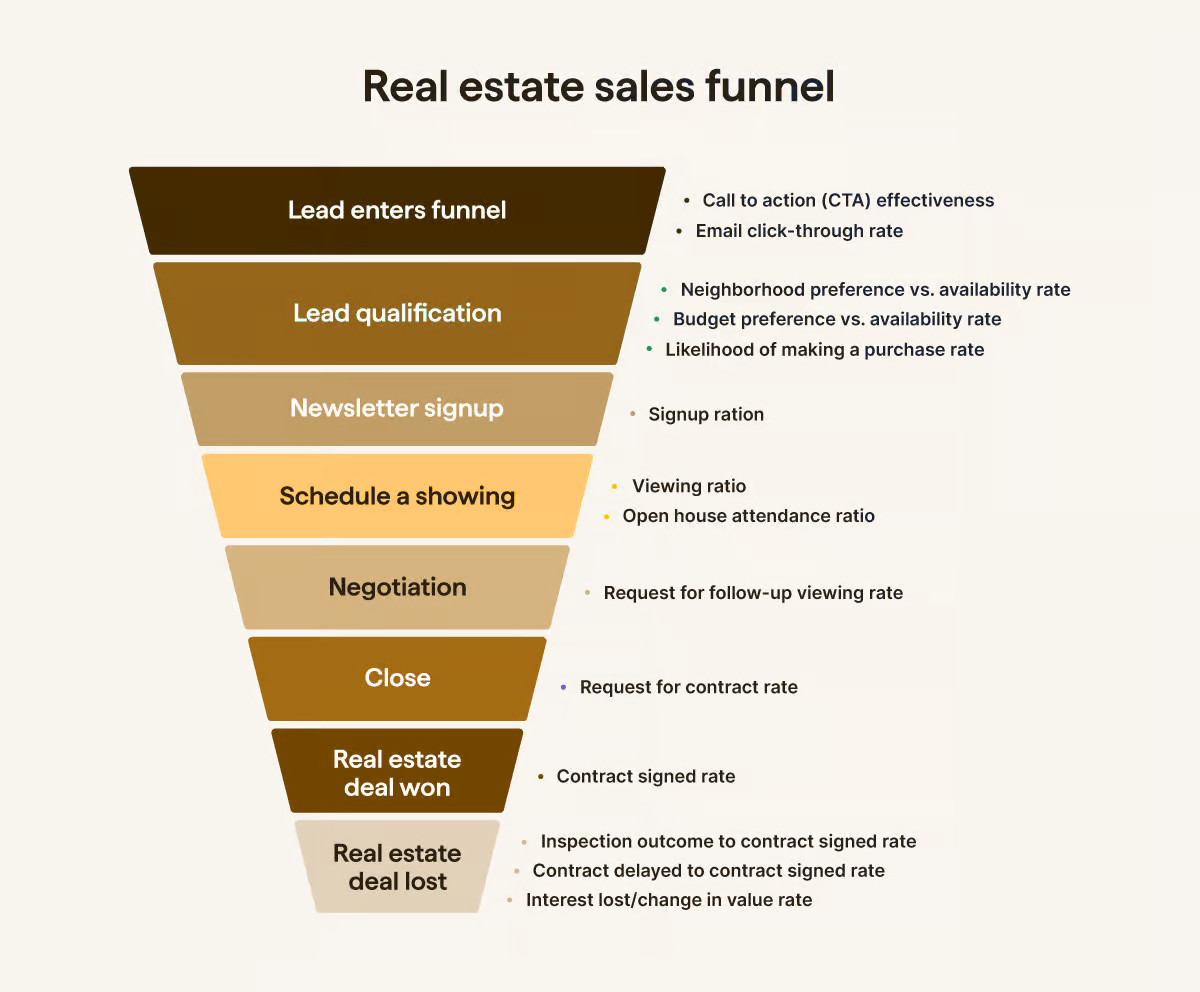
- Lead Enters Funnel
Leads come from a variety of sources — online searches, referrals, ads, newsletters, open houses. When someone shows interest, capture their details right away. Are they looking for a specific number of rooms? Do they have a neighborhood in mind? Organize leads based on their preferences, so you’re ready to reach out when a property that fits their criteria becomes available. - Lead Qualification
After initial contact, follow up with a welcome call. This is where you get more details on what they’re looking for and gauge how serious they are. Are they actively buying soon, or just researching for the future? Qualifying leads saves time and energy in the sales pipeline. - Newsletter Signup
Not everyone is ready to buy immediately. A newsletter keeps potential buyers engaged and informed about new listings. Even if they’re not in the market right now, a tempting property in your newsletter could be the nudge they need to reach out. - Schedule a Showing
When you have a property that fits the prospect’s needs, schedule a showing. This is a key moment to personalize the experience. Use past notes to highlight features that matter to them, whether it’s the backyard, location, or layout. Make them feel like this home was picked just for them. - Negotiation
Once the buyer shows serious interest, move quickly. The negotiation phase involves replying to communications, scheduling inspections, working with banks, and finalizing contract details. A smooth, responsive negotiation can make or break the deal. - Close
After the final walkthrough, it’s time for the signature. Personalize this step, too — show your appreciation and be available for any last-minute questions. A warm, supportive close leaves a lasting impression and encourages referrals. - Real Estate Deal Won
Congratulations, the contract is signed, and it’s time to hand over the keys. But don’t stop there — follow up to ask if they’d be open to referring friends or family. Keep the relationship alive; they might buy or sell again down the road. - Real Estate Deal Lost
Sometimes, deals fall through. Maybe the inspection revealed unexpected issues, or the buyer had a change of heart. Mark the deal as lost, but don’t close the door. Follow up strategically to see if their situation changes and they’re ready to restart the process.
This real estate sales funnel template is all about guiding leads smoothly through the journey, from first contact to closing. By focusing on qualifying, nurturing, and personalizing each stage, agents can create a strong marketing funnel that maximizes conversions and builds lasting client relationships.
Lead Magnet Funnel
The Lead Magnet Funnel is a powerful and proven approach to capturing leads and nurturing them toward conversion — something we’ve perfected at Dashly.io. It’s all about delivering value upfront to gather that all-important contact info and keep potential customers engaged.

This funnel starts with a landing page optimized for conversion.
You need a headline that’s crystal clear on the value you’re offering, bullet points highlighting the key benefits, and a strong call-to-action (CTA) that makes the next step obvious (like “Get Your Free Guide” instead of just “Submit”).

Keep the opt-in form simple — just an email or maybe a name.
Once they sign up, two things happen: they’re redirected to a confirmation page, and they’re added to an email sequence. Use the confirmation page to deepen the relationship. Don’t just say “thank you” — consider adding an upsell here, like an invite to a webinar, a free trial, or another valuable offer.
The email sequence is where you build trust and guide them toward an upsell or conversion. Here’s a sample sequence:
- Email #1: Delivery — Thank them for signing up, and remind them the lead magnet is in their inbox.
- Email #2: Follow-Up — Just in case they missed it, follow up with a quick reminder.
- Email #3: Your Story — Introduce yourself or your brand, share a bit of background, and link to something valuable, like a webinar.
- Email #4: Social Proof — Showcase testimonials or feedback about your offer.
- Email #5: Urgency — Add a sense of urgency to encourage them to take action.
This sequence gradually builds trust and brings them closer to conversion. Tailor each email to your audience for maximum impact — don’t rely on generic templates.
Finally, the Thank You page is where you track the lead conversion, especially if you’re using paid ads. Make sure tracking pixels, like the Facebook Pixel, are installed correctly to capture this data.
In short, the Lead Magnet Funnel is all about attracting leads, nurturing them, and moving them toward conversion. With a well-designed landing page and a smart email sequence, you’re setting up a marketing funnel that turns high-quality leads into customers over time.
Webinar Funnel Template
Setting up a webinar sales funnel does require more effort, but the payoff can be huge, particularly with live interactions that often convert better than pre-recorded sessions.
A live webinar lets you build a sense of community and engage directly with potential customers, answering their questions in real-time. However, not everyone who registers will show up, and even fewer will stay until the end. That’s where a structured reminder and follow-up sequence is critical.
Here’s how the webinar funnel works:
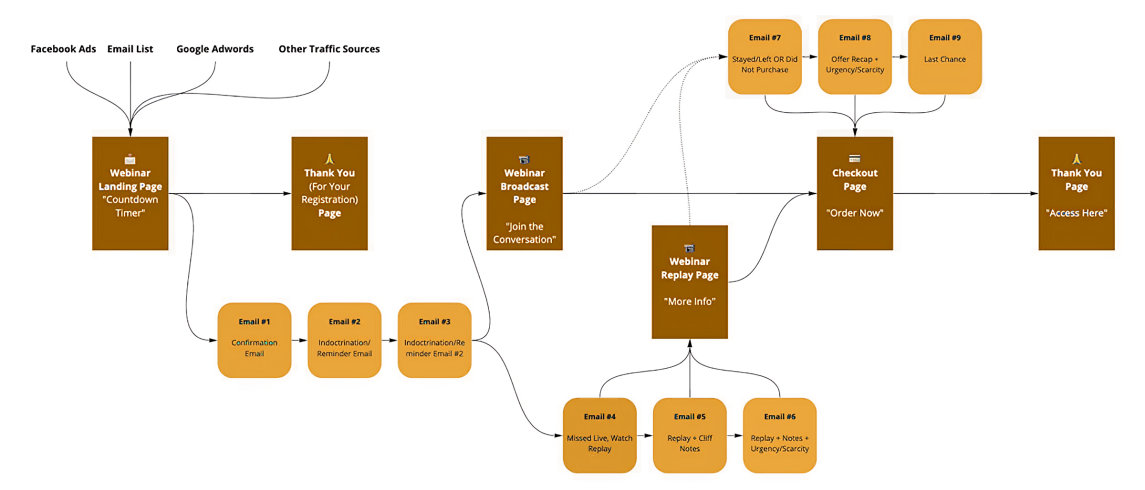
- Webinar Landing Page
Begin with a landing page designed to capture registrations. Make sure it’s optimized to convert, with a strong headline, clear value proposition, and a countdown timer to add urgency. Position the presenter as an expert in the field, as this can be a major draw for attendees. - Thank You Page (For Your Registration)
After registering, attendees land on a thank you page confirming their spot. This page should provide essential event details and set expectations for reminders. It’s the first step in making sure they actually show up. - Pre-Webinar Email Sequence
To maximize attendance, send out a sequence of reminders:- Email #1: Confirmation email immediately after they register.
- Email #2: A follow-up email as the event date approaches.
- Email #3: A final reminder on the day of the webinar, keeping it front and center.
- Webinar Broadcast Page
This is where the live event takes place. Encourage attendees to interact, ask questions, and participate in the chat. Real-time engagement keeps people involved and builds trust, making it more likely they’ll stick around until the end. - Webinar Replay Page
For those who missed the live session, a replay page offers a second chance to view the content. This page allows people to catch up on what they missed, which is especially helpful if your event was during a busy time. It’s also a great tool for reinforcing the key takeaways. - Post-Webinar Email Sequence
After the webinar, follow up with an email sequence aimed at those who attended and those who missed it:- Email #4: For non-attendees, share the replay link to give them another chance to engage.
- Email #5: Send out highlights or cliff notes to remind everyone of the webinar’s value.
- Email #6: Create urgency around limited-time offers or exclusive insights, encouraging action.
- Checkout Page
When your audience is ready to make a purchase, direct them to a checkout page with a clear call-to-action, like “Order Now.” This page should be simple, with a straightforward flow to complete the purchase. - Final Push Email Sequence
For attendees who didn’t purchase during or immediately after the webinar, send a last sequence to prompt action:- Email #7: A follow-up email targeting those who showed interest but didn’t buy.
- Email #8: A recap with an urgency trigger to create a final nudge.
- Email #9: A “last chance” email, giving one final opportunity to take advantage of the offer.
- Thank You Page (Access Here)
Once they complete the purchase, they’re directed to a thank you page with access details. This page confirms their purchase and offers clear next steps, such as account setup or an onboarding guide.
Funnel Template for Enterprise Companies
Let’s break down the Enterprise Sales Funnel template — tailored specifically for landing those big, high-value deals. At Dashly.io, we know that selling to enterprises isn’t just about pitching features; it’s about trust, timing, and the right strategy.
Here’s how this sales funnel guides you through each step.
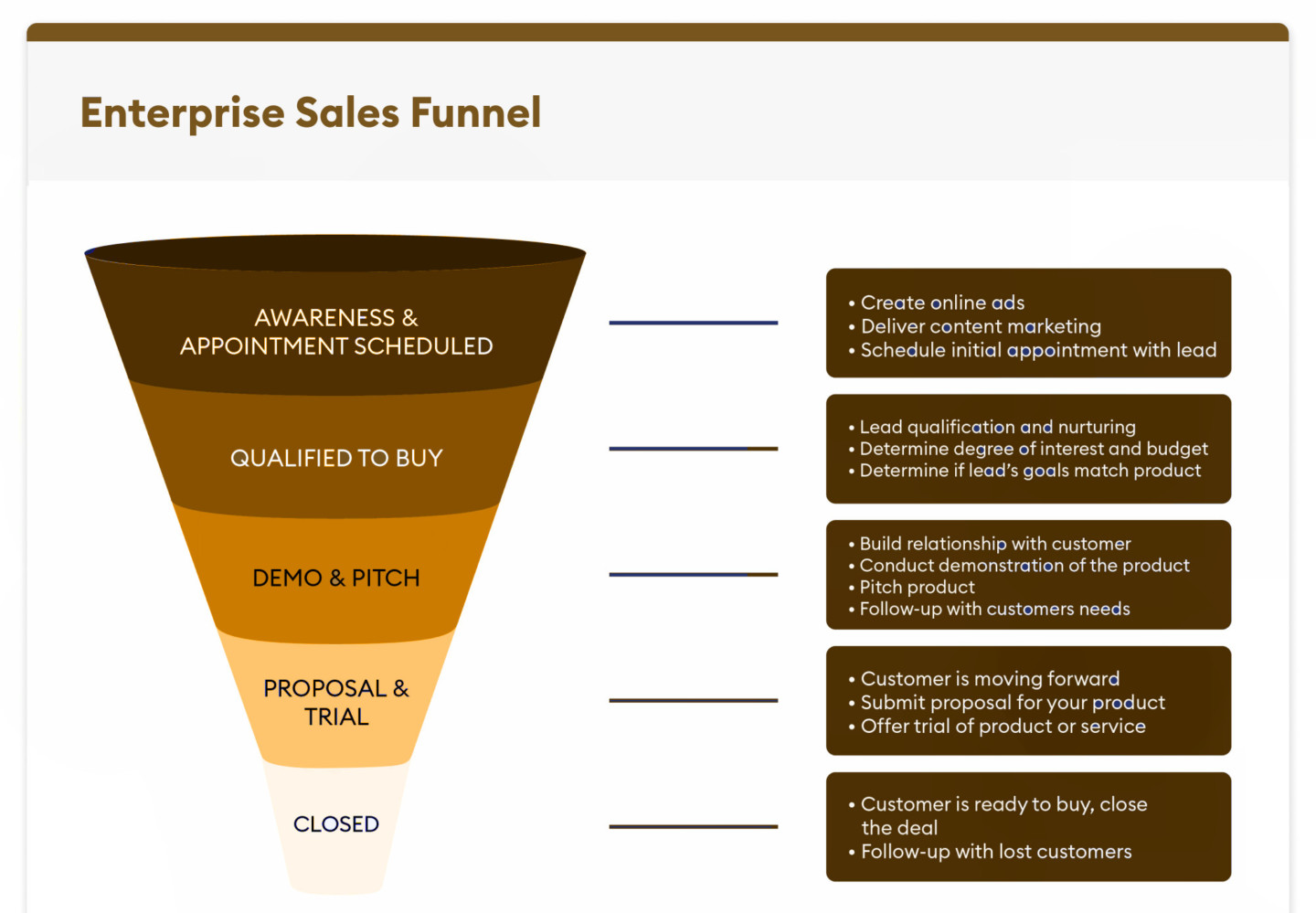
- Awareness & Appointment Scheduled
First, get on their radar. This stage is all about visibility. Your marketing and sales teams should work together, using SEO, ads, and content to build awareness. Once a lead is interested, it’s time to schedule that first appointment. This is your chance to dig into their pain points and see if there’s a fit. - Qualified to Buy
Now, qualify them. Do they have the budget? Are their challenges aligned with what you solve? This step filters out the time-wasters and zeroes in on leads that match your product. A streamlined sales funnel keeps you focused only on those who are ready to take the next step. - Demo & Pitch
Here’s where relationship-building kicks in. Show them exactly how your product addresses their needs with a tailored demo and pitch. This isn’t just about a feature dump — it’s about really listening and connecting. Building trust here makes all the difference in closing enterprise deals. - Proposal & Trial
If they’re interested, it’s time to dive into the details. Submit a proposal or offer a trial, outlining the value, pricing, and terms. Be ready to negotiate, but keep the focus on how your product solves their unique challenges. The goal? Get them seeing your product as the solution. - Closed/Won
They’re ready to buy. All that hard work pays off here as you close the deal. Now, make sure the onboarding process is smooth. You want them confident they made the right choice — this stage sets the tone for a long-term relationship. - Closed/Lost
Not every lead converts. Some will drop out, and that’s okay. Keep them in your sights, though; a strategic follow-up can reignite interest when the timing’s right.
This sales funnel template is all about precision. Each step is designed to build trust, qualify leads, and focus on high-potential clients. For CEOs and CMOs looking to close bigger deals, this template offers a clear path to getting there. Let your sales and marketing efforts align, and watch your lead numbers climb.
Retargeting Funnel
The Retargeting Funnel is a powerful add-on that can boost the effectiveness of any existing sales funnel strategy. It’s not about creating a separate funnel; rather, it’s a way of using targeted ads to keep prospects engaged at every stage of their journey.
Instead of relying solely on landing pages, the retargeting funnel uses ads to remind visitors about your offer and bring them back if they’ve left without converting.
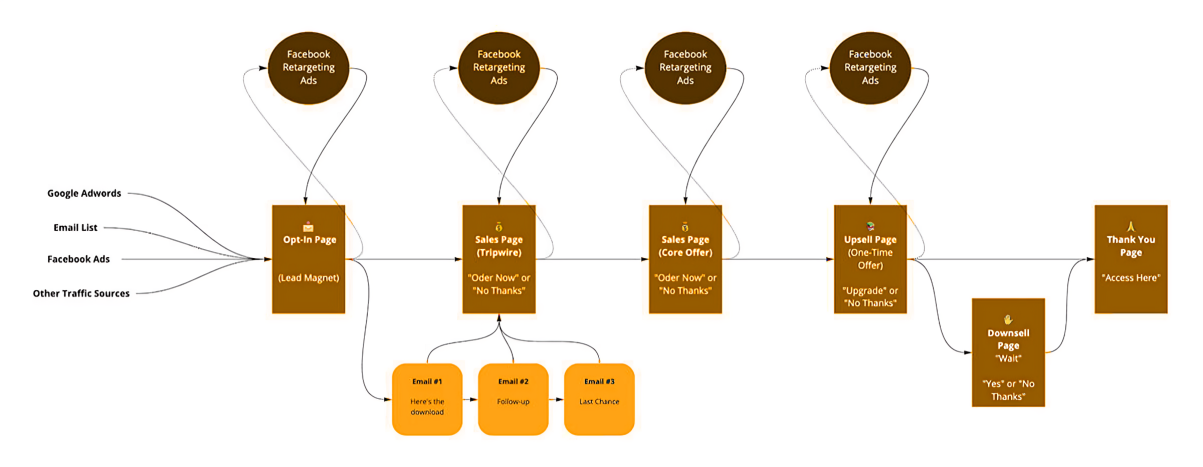
Marketers like Sam Ovens have used retargeting strategies to drive substantial growth by tailoring ads to different stages of the funnel. While his approach is aimed at high-ticket items, the concept can be applied to nearly any product or service. The idea is to meet prospects where they left off in the sales process, serving them relevant ads to keep them moving forward.
Here’s how it works:
- Initial Engagement
When prospects first interact with your funnel, they might arrive via ads, email lists, or other traffic sources. If they don’t engage or leave without taking action, retargeting ads remind them of your offer and encourage them to return. - Follow-Up Offers
As they progress, different offers may be presented, like entry-level or introductory products. Retargeting ads can nudge those who leave at this stage, giving them a reason to come back and complete the initial purchase. - Core Offer Engagement
For those who have shown initial interest but didn’t move forward with your main product or service, retargeting ads remind them of the core offer. The goal here is to pull them back to the main sales page and highlight what they’re missing. - Upsells and Downells
Once they’ve shown interest in your core offer, retargeting can also work for upsells or down-sells. If they didn’t convert on a high-ticket offer, ads can remind them of the benefits or present a more affordable option. - Final Conversion
Retargeting ads continue to follow prospects who haven’t yet completed the funnel, with messages crafted to remove objections or add urgency. This ensures that potential customers have every opportunity to take action.
The strength of a Retargeting Funnel lies in its flexibility. Tailored ads target users based on how far they’ve progressed in the funnel, re-engaging those who might otherwise be lost. If they move smoothly through the funnel, they only see relevant ads at each stage. But if they hesitate or exit, retargeting ads pull them back, showing them exactly where they left off and encouraging them to continue.
You’ve probably experienced this as a consumer when you see ads for products you just viewed on a site. With a retargeting strategy, you can do the same for your business, keeping leads engaged and increasing your funnel’s overall conversion rate.
High-Ticket Sales Funnel
At Dashly, we’ve seen firsthand how a high-ticket sales funnel can be a game-changer for businesses selling premium services or custom-developed products that can’t simply be purchased via an online checkout form. For those offering consulting services or high-end packages priced at $3000+ — where a client needs more than a few pages of information before committing — a visual funnel is essential to guide them through the buying journey.

With high-ticket items, your potential customers often fall into different stages of awareness about your service or product. Understanding these funnel stages — originally outlined by Eugene Schwartz in his concept of customer awareness — helps in crafting a strategy that meets each prospect right where they are.
Here’s a quick look at the stages of awareness that we consider when setting up a CRM for high-ticket funnels:

- Unaware: Prospects don’t know about you or the problem you solve.
- Problem Aware: They recognize the problem but have no idea how to address it.
- Solution Aware: They know there’s a solution but aren’t aware of your specific approach.
- Product Aware: They know your SaaS or service exists but aren’t sure if it’s the best choice.
- Fully Aware: They understand your offering and are interested.
When setting up your high-ticket funnel stages, keep these awareness levels in mind. Your page content, email copy, and ad creatives should be tailored to address each stage.
For instance, prospects who are only problem aware may need educational content, like an introductory video that builds trust and shows how your product or service uniquely addresses their challenges. This education-first approach is critical for high-ticket sales, as many visitors won’t be ready to commit without understanding your solution in depth.
For example, we often recommend a funnel flow that includes an educational video or live webinar to introduce the concept.

Rather than pushing them to an instant purchase, this funnel offers a strategy call after the video. This call is a pivotal step: it’s where you get to learn about the prospect’s specific needs and pitch your solution as a perfect fit.
In some cases, we suggest adding an application process for the strategy call. This extra step not only boosts commitment but also ensures you’re spending time with qualified leads. Once on the call, you can dive into their unique needs, positioning your service or product as the ideal solution.

It’s important to note that setting up a high-ticket funnel isn’t just about building pages and driving traffic. Optimization is key. Often, initial results may fall short of expectations, but that’s normal — there are many variables in play. A process of ongoing A/B testing and small improvements will make all the difference.
If you’re short on time or experience, don’t hesitate to seek help. Working with a design and tech service can save you a lot of trial and error and get your funnel up and running faster. Once optimized, a high-ticket funnel is an incredible asset that generates committed leads, nurtures them through personalized interactions, and delivers meaningful ROI.
Sales Funnel for Brokerage
A brokerage is a business that connects customers with multiple providers, offering a range of products or services. The brokerage sales funnel follows a structured path, with a few unique elements:
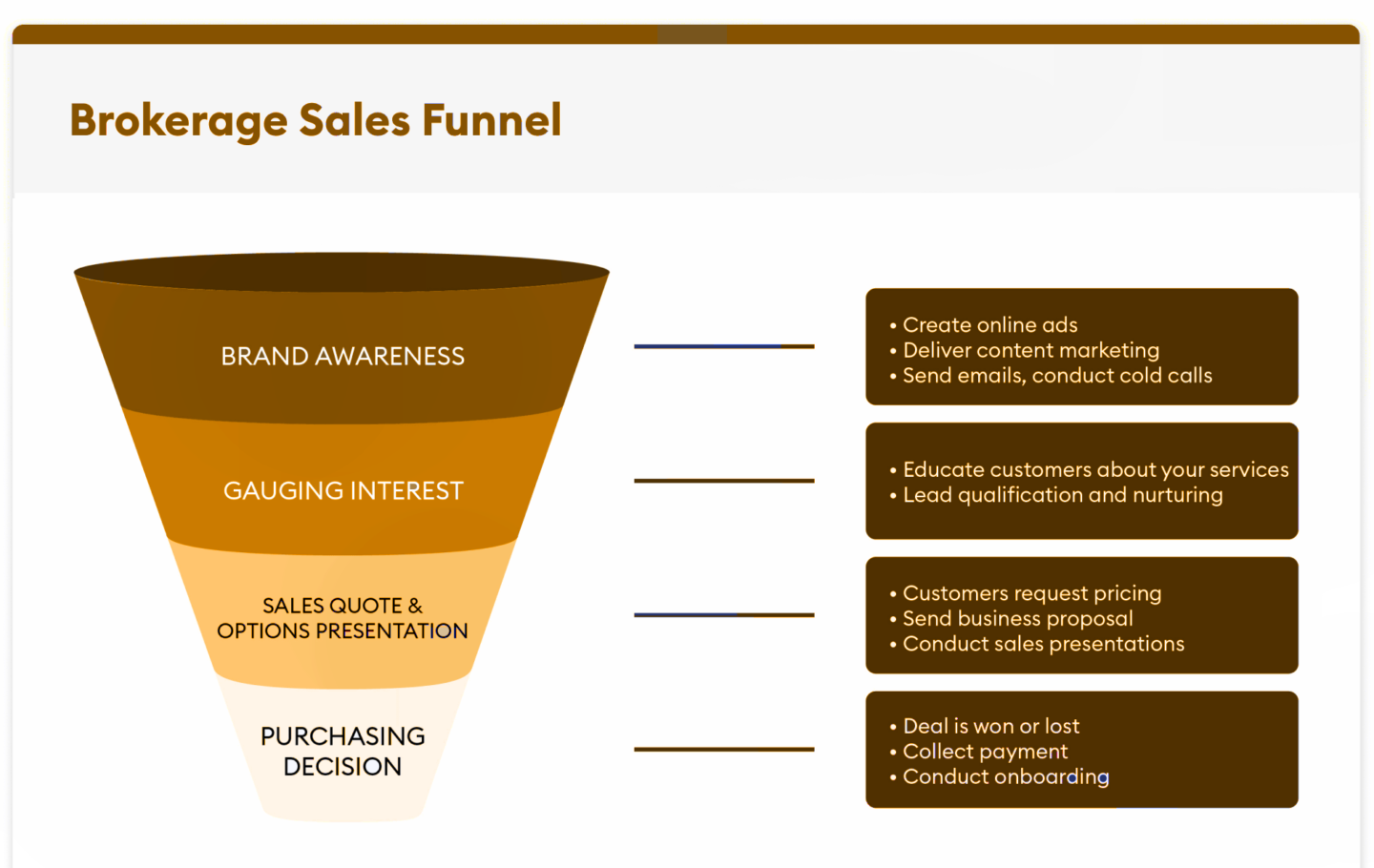
- Brand Awareness
Build recognition by using targeted marketing efforts to attract potential leads. - Gauging Interest
Educate customers on available services while nurturing and qualifying leads to keep their interest high and ready for the next steps. - Sales Quote & Options Presentation
Provide a customized quote with multiple provider options when customers request pricing, allowing them to compare and make informed choices. - Purchasing Decision
Guide the customer to make a final decision, completing the transaction and transitioning them from prospect to client.
This template is tailored to help brokerages efficiently manage leads while presenting a variety of solutions, guiding each lead through a well-defined journey.
What funnel template to choose?
Choosing the right funnel template depends on your product, audience, and sales goals. Here’s a quick guide to help you decide:
- Product Fit
For high-ticket or complex services, a high-ticket funnel with education and strategy calls works well. For simpler, lower-cost products, a lead magnet or direct sales page funnel may be enough. - Audience Awareness
A familiar audience might only need a simple sales funnel. An audience that needs more education benefits from a webinar or lead-nurturing funnel. - Sales Process
If your sales involve personal interaction, consider a funnel ending in a strategy call. For straightforward products, a direct-to-sales funnel works best. - Budget and Resources
Complex funnels (like webinars) need more setup. Limited resources? Start with a simple lead generation funnel and grow from there. - Test for ROI
Choose the funnel that fits best, monitor performance, and adjust as needed. The right funnel is one that delivers positive ROI. - Customer Journey
Map your customer journey and align the funnel stages accordingly, from awareness to purchase.
In short, match your funnel template to your business needs and audience. Test, optimize, and focus on what brings high-quality leads and conversions.
Grow your sales leads with Dashly
Dashly can help you grow sales leads by optimizing how you engage, qualify, and nurture potential customers. Here’s how Dashly drives results and why scheduling a demo is worth it:

- Automated Lead Qualification
Dashly automates the lead qualification process with customizable quizzes and forms, helping you quickly identify high-quality leads. This means your sales team can focus their time on the most promising prospects. - Personalized Customer Engagement
Dashly enables you to set up personalized email and chat campaigns based on user behavior. By segmenting audiences according to their actions and interests, you can deliver the right message at the right time, moving leads smoothly down the funnel. - CRM Integration and Centralized Data
Dashly integrates seamlessly with your existing CRM, bringing all lead data into one place. This gives your sales and marketing teams a complete view of each prospect’s journey, making it easier to nurture and convert leads. - Automated Follow-Ups
Use Dashly’s automated email and message sequences to keep leads engaged over time. Automated follow-ups ensure you stay top-of-mind without the need for manual effort, helping you build trust and move prospects closer to a sale. - Detailed Analytics and Insights
Dashly provides actionable insights into lead behavior and engagement patterns, so you can see what’s working and optimize accordingly. With detailed analytics, you can continuously improve your strategy to maximize conversions.
Want to optimize your funnel?
Learn how we can streamline your lead qualification, engagement, and nurturing process, giving your team the tools they need to drive sales growth.
To summarize
Finding the right sales funnel template can be a game-changer for driving growth and purchases in 2025. From high-ticket funnels that build trust through strategy calls with reps to simple lead magnet funnels capturing interest with valuable features, each template serves a purpose. It’s all about aligning the funnel type with your audience’s awareness, the complexity of your offer, and your sales goals.
Start testing. Keep optimizing. These top 10 funnels give you the structure to turn visitors into loyal customers. Whether you’re aiming for high-ticket purchases or quick conversions on lower-cost offers, there’s a funnel here to help you scale up, smartly and smoothly.
FAQ
Choosing the right template depends on factors like your product type, target audience, and sales goals. For high-ticket items, consider templates with stages that build trust (like webinars or strategy calls). For simpler, low-cost products, a straightforward lead magnet or product sales funnel may be enough.
Yes, but the type of template you use matters. Service-based businesses may benefit from high-ticket or consultation funnels, while e-commerce or SaaS companies often use simpler lead capture or product sales funnels to drive quick conversions.
Absolutely. Most templates are meant to be adapted to fit your business and target audience. You can modify stages, messaging, and even the tools used (like landing pages or automated emails) to make the template more effective for your specific needs.
Tracking metrics like conversion rates, drop-off points, and average time spent at each funnel stage can help you gauge effectiveness. Testing and optimizing each stage — whether that’s the landing page, CTA, or follow-up emails — is key to improving results.




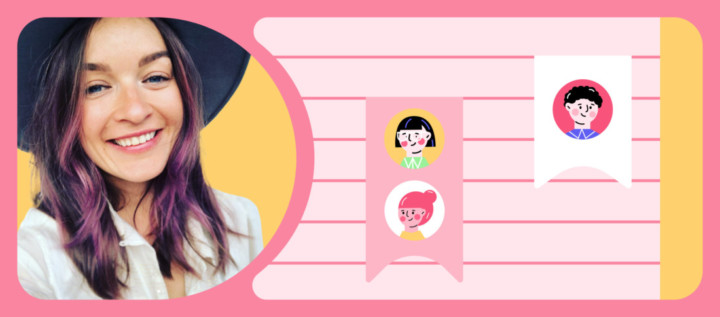
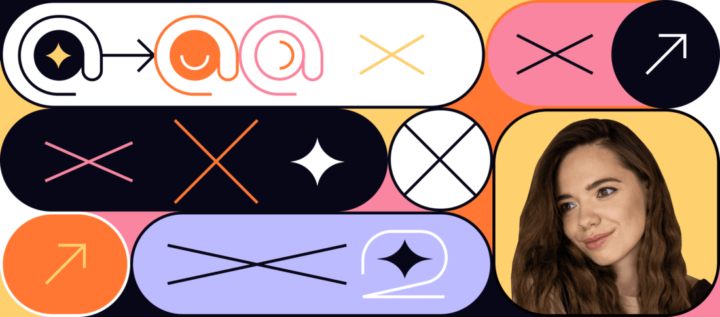
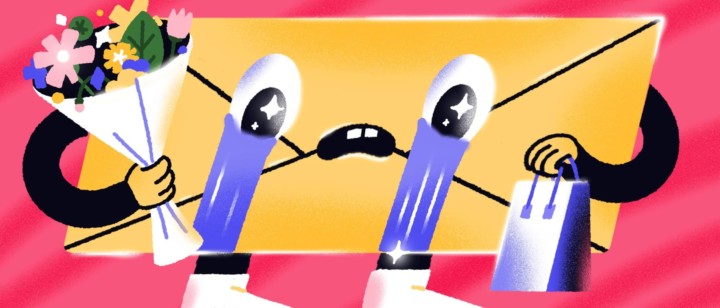
![21 proven tools for your 2025 marketing tech stack [Recommended by market experts]](https://www.dashly.io/blog/wp-content/uploads/2022/08/martech-stack-999-720x317.png)
![La guía definitiva de growth marketing [explicada por un growth hacker]](https://www.dashly.io/blog/wp-content/uploads/2023/04/The-ultimate-guide-to-growth-marketing-explained-by-a-growth-hacker-720x317.png)